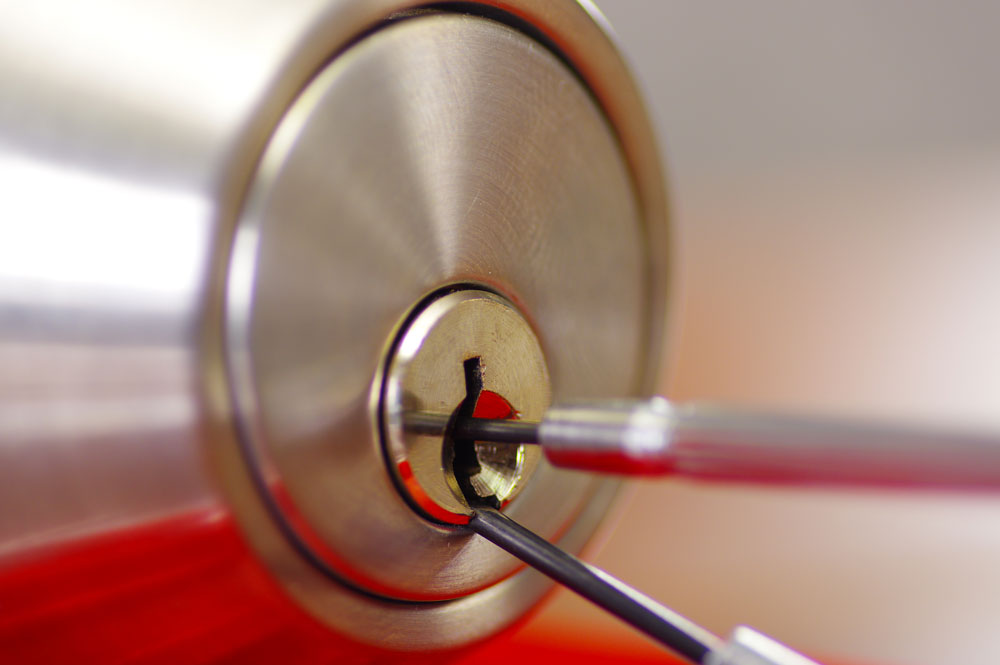
If you want to protect your jewelry, cash, important documents, or family heirlooms, the first step is to choose a home safe for valuables that fits your specific needs. Not all safes are created equal, and the right model depends on what you plan to store, where you’ll keep it, and how you want it secured. From understanding safe sizes and lock types to deciding whether to call a locksmith for installation, this guide covers everything you need to know before making your purchase.
Key Criteria to Choose a Home Safe for Valuables
When selecting a home safe, you’ll want to consider multiple factors, including size, protection level, locking mechanisms, and placement. A well-chosen safe not only protects your valuables from theft but also from fire, water, and accidental damage.
Determining Safe Size and Location Needs
Before you buy, assess what you intend to store. For example, if you only want to protect small items like jewelry, passports, or cash, a compact safe may be sufficient. However, for larger items such as binders of legal documents, family albums, or external hard drives, you’ll need a more spacious option.
Consider future storage needs, too. Many homeowners underestimate how much space they’ll need and later regret choosing a model that’s too small. It’s better to size up slightly rather than outgrow your safe in a few years.
When it comes to location, accessibility and concealment are key. Common placements include:
- Closets: Convenient and easily concealed, ideal for small or medium-sized safes.
- Bedrooms: A popular choice for quick access to valuables or personal defense items.
- Basements or garages: Suitable for larger safes or those designed to withstand fire and flood conditions.
- Wall or floor installations: Excellent for concealment, though they may require professional installation.
Wherever you place your safe, make sure it’s in a low-traffic area but still accessible in an emergency. Avoid damp environments unless your safe is waterproof or designed for moisture resistance.
Fire, Water, and Theft Protection Ratings Explained
Protection ratings are among the most important criteria to evaluate. Most safes are categorized by their resistance to fire, water, and burglary attempts. Understanding these ratings helps you match your safe’s performance to your needs.
- Fire Rating:
Fire-rated safes are designed to protect contents during a fire for a specified amount of time. For instance, a safe rated for 1 hour at 1,700°F can maintain an internal temperature below 350°F for one hour. This rating ensures that paper documents, jewelry, and small electronics remain intact during a fire. Look for UL (Underwriters Laboratories) or ETL (Intertek) fire ratings, which indicate the safe has undergone rigorous third-party testing. - Water Resistance:
Some safes provide protection from water damage due to flooding, sprinkler systems, or firefighting efforts. A waterproof or water-resistant safe is a smart choice for flood-prone areas or homes with basements. Check the IP (Ingress Protection) rating, which measures how well the safe seals out water and dust. - Theft Protection:
Burglar-resistant safes are tested for forced entry using drills, hammers, prying tools, and cutting equipment. The security level is typically represented by ratings such as B, C, TL-15, or TL-30. For example, a TL-15 safe can withstand 15 minutes of sustained attack with mechanical tools, while a TL-30 can resist up to 30 minutes. The higher the number, the greater the security.
When comparing models, remember that more protection often means more weight. Heavier safes are harder to move and steal, which naturally adds to their deterrent effect.
Comparing Lock Types and Security Ratings for Home Safes
Your locking mechanism determines how you access your safe and how well it keeps others out. There are several types of locks available, each with unique advantages and considerations.
- Key Lock Safes:
These are the simplest to operate and don’t rely on power or electronics. However, they can be less secure if the key is lost or copied. Ideal for those who prefer mechanical reliability over digital complexity. - Combination Dial Locks:
Classic combination locks use rotating dials to open the safe. They’re time-tested, durable, and don’t require batteries. However, they take longer to open and may be more challenging for some users to reset. - Digital Keypad Locks:
A popular modern option, digital locks allow you to set custom codes for quick access. Many feature an automatic lockout after multiple failed attempts. Some models include backup keys or power ports to prevent lockouts during battery failure. - Biometric Locks:
These safes use fingerprint or facial recognition technology for access. They’re extremely convenient for frequent use but can be more expensive and may require regular maintenance. - Smart Safes:
The newest innovation in home security, smart safes connect to your home network, allowing remote access, alerts, and activity logs. While these offer cutting-edge convenience, they also depend on software updates and cybersecurity measures.
When comparing lock types, weigh convenience against reliability. Digital and biometric locks are fast and easy, while mechanical locks provide long-term dependability without batteries or wiring.
Professional Installation Tips for Home Safe Placement
A home safe’s security is only as strong as its installation. Even the most durable safe won’t offer full protection if it’s not anchored correctly or is easily accessible to intruders.
Proper installation ensures your safe remains immovable, discreet, and resistant to tampering. Here are some professional insights into safe placement and mounting.
- Bolting Down Your Safe:
Bolting a safe to the floor or wall prevents thieves from removing it entirely. Most safes include pre-drilled anchor holes for this purpose. For maximum stability, anchor your safe into concrete or wall studs, not just drywall or flooring material. - Weight Distribution and Support:
Large safes can weigh hundreds of pounds, so it’s critical to install them on a reinforced surface. Avoid upper floors unless the structure can handle the load. A licensed locksmith or contractor can assess your home’s support capacity before installation. - Concealment Strategies:
A safe that’s hidden is less likely to be targeted. Professional installers can conceal safes behind mirrors, artwork, false walls, or under floorboards. The more inconspicuous the placement, the safer your valuables will be. - Environmental Protection:
If your safe is located in a humid area, such as a basement, consider using desiccants or dehumidifiers to prevent moisture damage. For fire-rated safes, ensure there’s clearance from walls and ceilings to maintain heat dispersion.
Booking Locksmith Services to Securely Install Your Home Safe
While some safes are marketed as DIY installations, hiring a professional locksmith is often the smarter and safer choice. Locksmiths bring the expertise, tools, and security know-how to ensure your safe is properly mounted and fully operational.
When to Hire a Locksmith:
- For Heavy or Large Safes: Moving and anchoring a 200+ pound safe is no small feat. A locksmith has the right equipment and manpower to transport and secure it without damaging your property.
- For Wall or Floor Safes: These installations often require cutting through drywall, flooring, or even concrete. A professional will ensure it’s done cleanly and securely.
- For Combination or Code Changes: If you’ve purchased a pre-owned safe or forgotten the code to an existing one, a locksmith can safely reset or reprogram it without compromising the locking mechanism.
- For Enhanced Security: Locksmiths can evaluate your safe’s placement and recommend additional protections, such as reinforcing the area around it or upgrading the lock system.
What to Expect from a Locksmith Installation Service:
- Site Assessment: The locksmith will inspect your space to identify the most secure and practical installation point.
- Anchoring and Mounting: They will bolt your safe securely into place, ensuring maximum stability.
- Lock Calibration and Testing: Once installed, the locksmith will test the lock system, ensure alignment, and calibrate the combination or keypad.
- Security Walkthrough: A reputable locksmith will review how to use and maintain your safe effectively, including code management and battery replacement (for electronic models).
By hiring a professional, you eliminate the risk of improper installation and ensure that your safe performs exactly as intended.
Additional Tips for Choosing and Maintaining a Home Safe
Even after installation, proper maintenance and mindful use will help your safe last longer and provide consistent protection.
- Schedule Regular Inspections:
Have a locksmith inspect your safe annually to ensure the lock functions smoothly and the structure remains uncompromised. - Replace Batteries on Time:
For electronic and biometric safes, replace the batteries at least once a year or as recommended by the manufacturer. - Keep Codes Confidential:
Never write down combinations or share them with unauthorized individuals. If you suspect your code is compromised, contact a locksmith immediately to reset it. - Use Organizational Inserts:
Consider using internal organizers, trays, or fireproof envelopes to store items neatly and maximize space. - Register Your Safe:
Some manufacturers offer warranty coverage or replacement programs if you register your product. This can be invaluable in case of damage or loss.
Why Professional Help Matters for Long-Term Security
Many homeowners assume buying a safe online and installing it themselves is enough, but even the highest-rated model can become vulnerable without expert handling. A professional locksmith not only ensures your safe is anchored correctly but also verifies its locking integrity and provides guidance on best practices for long-term security.
In addition, locksmiths have access to advanced tools that prevent damage during installation or repairs. They can also respond quickly if you ever face a lockout, lost key, or electronic malfunction.
Safeguard What Matters Most
A home safe is more than just a metal box; it’s a safeguard for your most personal and valuable possessions. Choosing the right one involves balancing convenience, size, protection level, and installation quality. The goal is to create a security solution that fits seamlessly into your lifestyle while providing peace of mind.
If you take the time to compare models, understand protection ratings, and work with a professional for installation, your investment will serve you for years to come.
Call Express Locksmith for Trusted Home Safe Services
At Express Locksmith, our name is what we’re all about! You can count on us for quick, reliable, and professional lock and key services for your home, business, or automobile. Whether you need help choosing and installing a home safe, changing a combination, or securing your property after a lockout, we’re available 24/7 to assist you.
No matter the time or circumstance, our experienced locksmiths are ready to help protect what matters most. From master key systems to emergency lockouts, we’ve built our reputation on fast, friendly, and dependable service.
Call us today to schedule your professional safe installation or locksmith service. We’re always available, no matter the situation.
